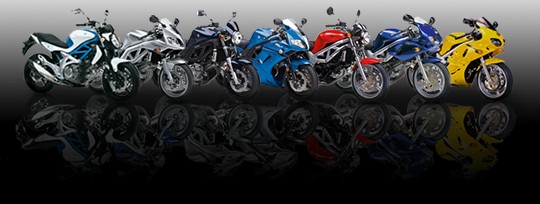 |
 |
| Bikes - Talk & Issues Newsworthy and topical general biking and bike related issues. No crapola! Need Help: Try Searching before posting |
 |
|
|
Thread Tools |
|
|
#1 |
|
Guest
Posts: n/a
|
Ladies.
I currently have (in my kitchen and bathroom) two sets of Nissin front calipers from a 2000 Fireblade and a 2007 Daytona 675. I've had the pistons out to clean them up and check the seals. Whilst finishing off the Fireblade items tonight I made quite a discovery: The Fireblade pistons appear to be made out of some sort of alloy, whilst the Daytona ones are made out of plated steel. I got my scales out and weighed each complete set; Fireblade= 170 grams Daytona= 504 grams I also observed that in each set of 8 pistons, all appear to be exactly the same size as the ones from the other bike (no vernier or micrometer to hand) but there are a few differences. The Blade items have a dished underside and the Daytona ones appear to be made from two pieces, one pressed into the other. Please see the picture below. Daytona on the left, Fireblade on the right.  It seems mental to me that a bike 7 years newer than the other has brake pistons weighing in at bang on 1/3kg more than the older one, when it's all about keeping weight, and especially unsprung weight, to a minimum. Also the Triumph ones will pit in time (and already have) whereas the Honda ones won't. Question time: 1) What's with the dishing on the Fireblade pistons? 2) What's with the line on the Daytona pistons (possibly two parts methinks)? 3) Why (apart from slight monetary issues) would Triumph use the steel pistons? Clever people unite and discuss. 
|

|
|
|
#2 |
|
Member
Mega Poster
Join Date: Apr 2011
Location: essex
Posts: 5,314
|
Edit
when it's all about keeping cost,to a minimum and especially profit, to a maximum
__________________
Raisin cookies that look like chocolate chip cookies are the reason I have trust issues. |
|
|

|
|
|
#3 |
|
Member
Mega Poster
Join Date: May 2005
Location: Sunbury Middlesex
Posts: 1,396
|
Good morning all.
A lot of caliper piston's are dished on the underside. Presumably to help with the bleeding process. On some calipers, the caliper has a sort of cross hatching cast into it, directly behind the piston instead. When I make stainless caliper pistons I always machine a recess into the base of the piston. Indeed, Honda have been using that type of piston for several years on certain bike's. I've yet to find out what they're made of. As to the line on the Triumph piston who knows. I doubt that they're made in two parts however. It would be interesting to find out for sure. I would think that, as has been said, cost is the main issue for using cruddy old steel pistons. Cheers. |
|
|

|
|
|
#4 |
|
Member
Mega Poster
Join Date: Apr 2011
Location: essex
Posts: 5,314
|
Honda have used chrome plated Alu .
__________________
Raisin cookies that look like chocolate chip cookies are the reason I have trust issues. |
|
|

|
|
|
#5 |
|
Member
Mega Poster
Join Date: Jul 2003
Location: Warwickshire
Posts: 2,804
|
I suspect the black coating may well be what is generically termed DLC , or "diamond-like coating". This is getting quite widely used in engine/atuto components, valve train parts etc. Various types in use, not an expert on it I'm afraid.
I go along with Spannerman's guess for the dishing, air gets stuch in very small gaps so to avoid it on the end face a machined dish will ensure clear fluid flow paths across the cylinder. Is the dish domed in that photo, can't quite make it out. If so this might be to stiffen the end face while minimising mass, reducing distortion of the piston under pressure. Just a guess.
__________________
"Artificial Intelligence is no match for natural stupidity" |
|
|

|
|
|
#6 |
|
Guest
Posts: n/a
|
|

|
|
|
#7 |
|
Member
Join Date: Jul 2010
Location: Devon
Posts: 876
|
The domed head is probably because the pistons are made from a weaker material, and a convex or concave shape is a more efficient shape for resisting pressure without deforming than a flat surface. This means the pistons get to be as light as possible at the expense of some more complex machining.
What you have to be careful of is the clearance between piston and the bore in the caliper body. The piston can get extremely hot under sustained hard braking, and insufficient clearance will have it binding within the caliper. Aluminum alloys expand more than steel so greater clearances may be needed. Aluminum alloys also have much higher thermal conductivity than steels, so any heat from the pads will be transmitted to the seals and fluid more easily. The 4 pot Tokico calipers used on Suzukis are like this as well, the ones from the cheaper bikes have steel pistons, the GSX-R's have lighter alloy pistons. |
|
|

|
|
|
#8 |
|
Guest
Posts: n/a
|
Interesting.
So whilst it's possible the lighter pistons may go in the Daytona calipers the bore of the pistons and seals may be different. |

|
|
|
#9 |
|
Member
Mega Poster
Join Date: Apr 2011
Location: essex
Posts: 5,314
|
The seal might appear the same, but the grove that determines the seals profile and behavior my be the difference.
__________________
Raisin cookies that look like chocolate chip cookies are the reason I have trust issues. |
|
|

|
 |
|
|
 Similar Threads
Similar Threads
|
||||
| Thread | Thread Starter | Forum | Replies | Last Post |
| Soho tonight, no clever questions. | Sid Squid | Soho Massive | 22 | 20-03-11 09:45 PM |
| Calling all clever electronics people. | arcdef | Idle Banter | 23 | 23-07-09 10:28 AM |
| Clever techy people can I have your eyes and brains for a moment? Weird wear on wheel spacer. | monkey | Bikes - Talk & Issues | 7 | 22-05-09 05:58 AM |
| Brake Pistons? | vardypeeps | SV Talk, Tuning & Tweaking | 4 | 29-08-08 12:12 PM |